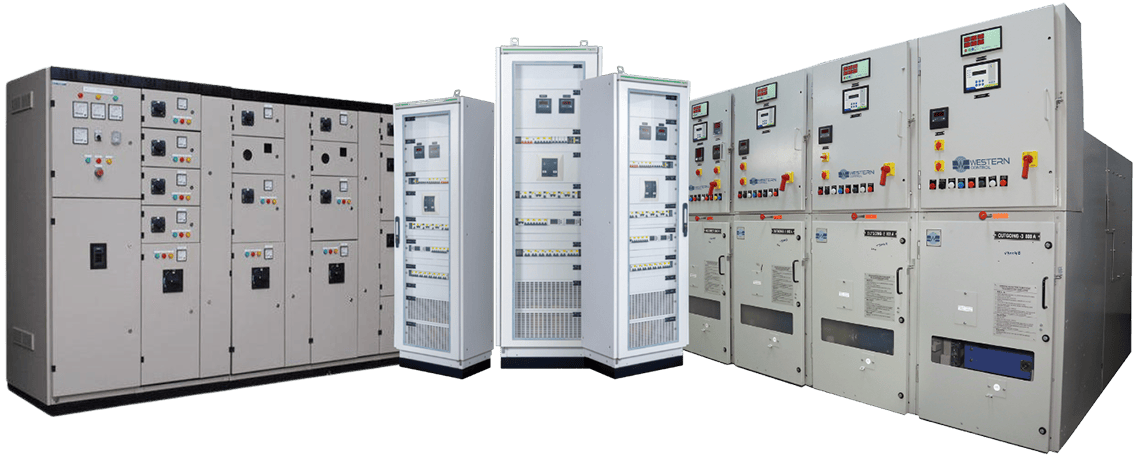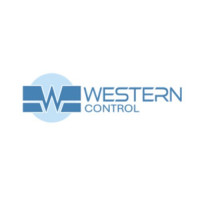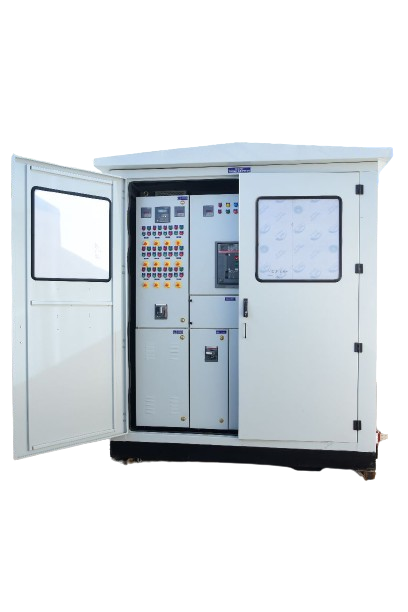Improve Maintenance with Draw Out Panels

Strong 8k brings an ultra-HD IPTV experience to your living room and your pocket.
In the world of modern electrical infrastructure, safety, reliability, and ease of maintenance are top priorities. For industries that rely on uninterrupted power and quick repair time, Draw Out Panels offer a practical and efficient solution. These panels have been specially designed to make maintenance easy, fast, and risk-free without shutting down the entire system.
When dealing with power distribution in large buildings, manufacturing plants, or utility systems, any delay in electrical repair can affect productivity. That’s why professionals in the electrical industry prefer Draw Out Panels for their ability to isolate and replace faulty sections without disrupting the whole system. These panels are not only smart in design but also ensure that technicians can safely access and work on internal components without putting the rest of the electrical network at risk.
This article will take you through the working principle, design advantages, use cases, and how Draw Out Panels improve overall system maintenance and reliability. We'll also look at how they help with cost control and power safety. If you're managing an industrial facility or planning new electrical infrastructure, understanding Draw Out Panels will give you a strong reason to make a more efficient and safe investment.
What Are Draw Out Panels?
Draw Out Panels are a type of electrical control panel that features removable sections or units. These sections can be pulled out, inspected, serviced, or replaced without shutting off the entire system. Each section in a Draw Out Panel contains its own circuit breaker, contactors, meters, relays, and wiring. These components are built into individual drawers or modules that slide in and out of the panel frame.
In fixed panels, technicians often have to turn off the whole board or disconnect the main power to work on one faulty section. This not only wastes time but also increases the risk of power outages. In contrast, Draw Out Panels allow the isolation of a specific circuit or motor, making it possible to remove just the affected unit. Power supply to other units remains unaffected, making these panels highly suitable for facilities that require continuous operation.
Why Maintenance Matters in Power Systems
Maintenance is the backbone of any power distribution system. Without proper upkeep, electrical systems can face unexpected failures, overheating, and short circuits. These problems not only lead to costly downtime but also pose serious safety risks.
Traditional maintenance methods often involve disconnecting large sections of the system. This can interrupt operations and cause delays in production. In environments like hospitals, data centers, and factories, such interruptions are unacceptable. That’s why industries are turning to modern solutions like Draw Out Panels to make maintenance easier, faster, and safer.
Technicians can easily pull out a unit, inspect it, perform repairs, or replace parts—all while the rest of the system stays live and functional. This feature drastically reduces maintenance time and allows for scheduled, non-disruptive service.
How Draw Out Panels Work
Each unit inside a Draw Out Panel operates as an independent module. The module includes all the essential electrical protection and control equipment. These modules are mounted on sliders or rails and can be drawn out without using tools. Once pulled out, the module is automatically disconnected from the system both electrically and mechanically. This ensures safety for the technician handling the unit.
Some panels also include interlock systems to make sure the unit cannot be removed unless it is fully disconnected. Once maintenance is complete, the module can be pushed back in and locked into place, restoring full operation without any rewiring or extra setup.
This modular operation makes it much easier for engineers to test, replace, or upgrade parts within the electrical control system. It also minimizes the chance of human error, which is common in complex wiring systems.
Applications of Draw Out Panels in Industries
Draw Out Panels are widely used in industries that demand high reliability, constant power supply, and quick servicing ability. You’ll find them in large manufacturing plants, commercial buildings, hospitals, utility substations, data centers, and airports. These are places where electrical systems must function without fail and maintenance must be quick and effective.
In motor control centers, Draw Out Panels allow engineers to isolate a single motor for maintenance without disturbing others. This means factory lines can continue running while a single section is serviced. This is especially valuable in batch production or continuous process industries.
In large buildings, these panels manage lighting, elevators, air-conditioning units, and backup systems. They allow facilities to make changes or fix issues without shutting off power to the entire floor or building.
Safety Benefits of Draw Out Panels
Safety is one of the most important aspects of electrical maintenance. Traditional panels that require shutdowns increase the risk of shock or arc flash incidents when technicians have to work with live wires. Draw Out Panels are designed with built-in safety mechanisms that ensure the unit is completely isolated before removal. This prevents accidental contact with live parts.
The panel design often includes shutters, mechanical interlocks, and guide rails that protect workers. When a unit is drawn out, power is automatically disconnected. Once the issue is fixed, the unit can be reinserted, and power is restored only when the module is properly locked in place.
These safety features make Draw Out Panels ideal for compliance with modern electrical safety standards and workplace safety rules. They also reduce downtime caused by accidents or injury investigations.
How Draw Out Panels Reduce Downtime
One of the biggest benefits of Draw Out Panels is their ability to reduce downtime during maintenance. In a traditional fixed panel system, any maintenance work requires a complete or partial shutdown. This results in lost productivity, especially in industries that operate around the clock.
With Draw Out Panels, downtime is kept to a minimum. If a section of the panel needs repair or inspection, it can be taken out and replaced with a spare module. This "plug-and-play" approach ensures that power can be restored quickly. Maintenance can continue on the removed unit without affecting system performance.
This is particularly useful in critical systems such as hospitals or data centers, where continuous power is essential. The ability to swap out faulty modules instantly reduces risk and increases operational reliability.
Cost Savings Over Time
While the initial cost of Draw Out Panels may be higher than traditional fixed panels, the long-term savings are significant. These panels reduce the need for full system shutdowns, lowering the costs associated with downtime. They also extend the life of electrical components by allowing regular maintenance without stress on the system.
Technicians spend less time troubleshooting since modules can be removed and tested individually. This reduces labor costs and speeds up diagnostics. Since modules are standardized, replacements are easy to source, reducing the need for custom-built solutions during emergencies.
In high-risk environments, the reduced likelihood of accidents due to built-in safety mechanisms also saves costs on insurance claims, equipment replacement, and legal compliance. The initial investment in Draw Out Panels is recovered quickly through reduced disruptions and improved system performance.
Supporting Green and Sustainable Operations
In modern infrastructure projects, energy efficiency and sustainability are key goals. Draw Out Panels support these objectives by allowing smooth operation and maintenance, which in turn reduces energy waste caused by faults or poor load management.
The panels are often paired with smart monitoring systems that track energy use, fault history, and system load. This information can be used to improve energy management strategies, schedule preventive maintenance, and avoid overload situations.
When maintenance is easier and safer, facility managers are more likely to keep systems clean and running efficiently. This indirectly supports environmental goals and reduces the carbon footprint of the operation.
Installation and Best Practices
Installing Draw Out Panels should be done by certified professionals who understand electrical system design and safety. Panels should be placed in dry, well-ventilated, and easily accessible areas. They should not be exposed to direct sunlight or moisture. Once installed, regular inspection is recommended to check for dust, wear, or any loose connections.
Technicians should also be trained in the correct procedure to remove and replace modules. Safety interlocks and shutters should be tested regularly to ensure proper operation.
A standard checklist can be used for each module to confirm that it is working correctly before re-insertion. These maintenance practices are equally important for outdoor systems like Feeder Pillars, where regular inspection ensures uninterrupted power distribution and long-term performance.
Conclusion
Draw Out Panels have become an essential part of modern electrical distribution systems. Their smart, modular design makes them the top choice for industries that need quick, safe, and efficient maintenance solutions. By reducing downtime, enhancing safety, and making upgrades easier, these panels offer significant value over time.
Facilities that use Draw Out Panels experience fewer interruptions, lower maintenance costs, and safer working conditions. These panels are ideal for modern industrial needs where power cannot be compromised. From motor control centers to commercial buildings, Draw Out Panels bring flexibility, speed, and confidence to your power infrastructure.
If you are planning an electrical upgrade or setting up a new system, now is the perfect time to invest in smart solutions that improve your operation’s performance and reliability.
Looking for an outdoor power distribution solution? Explore our range of Feeder Pillars—built for durability, safety, and easy installation in all weather conditions.
Note: IndiBlogHub features both user-submitted and editorial content. We do not verify third-party contributions. Read our Disclaimer and Privacy Policyfor details.




